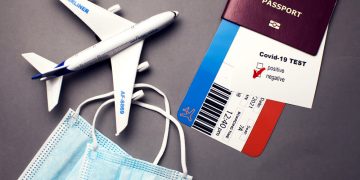Feature Image by FellowNeko/Shutterstock
Wander and Experience is reader-supported. When you buy through links on our site, we may earn an affiliate commission.
There is no denying that travel can be expensive. A pastime that was limited to only the wealthy not too many years ago, travel has become widely accessible to a full range of budgets. From five-star hotels and first-class flights to budget airlines and hostels, there is an extensive range of options available to the modern traveler.
For those looking to stretch the budget so that they can make the most of their vacation, the below list of 100 money-saving tips for travel provides a detailed approach to finding savings in every aspect of a trip.
From the early days of the trip planning stage to the time spent at your destination, there will naturally be plenty of choices and decisions where having a little bit of extra knowledge can help save enough for an extra special meal or an added attraction or activity.
Pick and choose the best tips for your trip plan and save them down as reminders in the same place as your itinerary. Expect that every bit of money saved helps, especially for couples or families traveling, where a few dollars savings per person can add up.
Travel Plan and Budget Money-Saving Tips
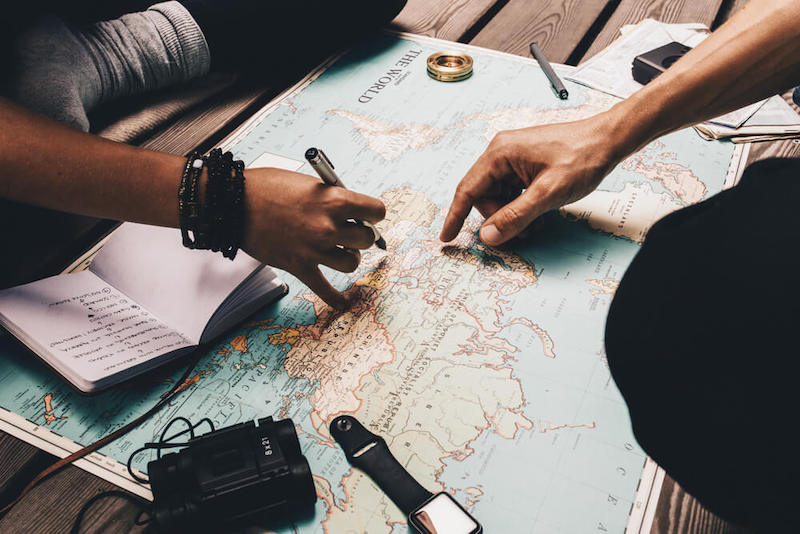
1. Set a Budget and Track Your Expenses
One of the most obvious yet often overlooked tips, having an awareness of how much you are willing to spend on your trip in the first place, is an excellent place to start.
Untracked spending can add up. You can create an estimate of expenses as you plan your trip, then compare the actual costs against the estimate as you go. With this tracking, you can quickly identify where you are over or under budget and make adjustments early in your trip.
Use a spreadsheet on your phone, notebook app, shared notebook over the cloud, budget app, or even keep track on paper. Evernote offers a great free phone app to keep track of trip expenses and planning in one spot, with access across devices available for planning between a computer and phone.
2. Book Fully Refundable Reservations as Early as You Can
There is no greater frustration in trip planning than missing out on a great hotel rate or airfare. Knowing that your indecision cost you potentially hundreds of dollars is a regret that won’t escape your mind quickly.
Get yourself comfortable making and canceling reservations as part of the trip planning process. Then, if you see a decent rate that happens to be fully cancelable without a penalty and, even better, require no prepayment, book now and decide later.
These limited-commitment options are more often seen with hotel bookings than airfare, where more stringent cancelation policies exist. Though, when you come across an extremely cheap airfare, if there is flexibility to change the dates, a quick decision can help save you a lot of money on the fare.
Don’t forget to set reminders to cancel any bookings before the cancelation deadline. Your savings will quickly be lost when you find out that you accidentally booked two hotels for the same dates.
3. Stay Away From Big Cities
Larger cities with higher real estate costs, labor, goods, and services are guaranteed to be more expensive than the suburbs around the same cities or other less populated destinations.
Sometimes it may be difficult to skip Paris if the purpose of the trip is to visit Paris’s attractions. But, for destinations like New England, you can save serious cash by avoiding staying in Boston if your objective is to see the historical sights around the region. Instead, head into the city for the day and book your hotel closer to towns like Lexington, Concord, Salem, Gloucester, or Plymouth.
4. Consider Off-Season or Shoulder-Season Travel
With peak-season dates comes peak-season pricing, providing great deals to be found for travelers willing to opt for a less popular time to visit.
Most European destinations during July and August command the highest rates out of the whole year. However, visitors who can take their European vacation in late September or October will find lower hotel rates, less crowded attractions, and better rental car and airfare deals. From November to February in Europe, even better values can be found.
Bigger cities or regions with a temperate climate will offer the best off or shoulder-season experiences. For example, while no one wants to visit a beach during a freezing winter week, Vienna, Rome, Kyoto, or Amsterdam can offer different experiences during the colder weather months. Visitors will find plenty to do, fewer tourists competing for the same attractions, and far less budget required to enjoy the same food, museums, architecture, and sights, minus the lines and crowds.
5. For Multiple Destinations, Search Flexible Routings
Nearly all airfare search engines, booking websites, or airline websites offer a third search option after round-trip, and one-way journeys, the multi-city option. This option is great for entering more complicated itineraries and seeing if the airfare comes back cheaper than booking separate one-way flights.
You can book open-jaw flights, where your departure flight is into one airport, and the return flight is back from another one—for example, flying from New York to London and returning on a Paris to New York flight.
You can book stopover flights, where you stay overnight or longer in one connection city before flying on to your destination, and then return directly back from your final destination. An example of this would be flying from New York to Paris for three nights, then Paris to Rome, and flying back to New York after four days in Rome.
You can even book a series of one-way tickets ending up back at your original departure point. An example of this would be New York to London to Paris to Rome to New York.
While you may find that this search method returns more expensive results, there can often be savings found in some of the results, with simplified routing being an added benefit in some cases.
6. Setup Notifications or Email Alerts for Travel Deals or Newsletters
Subscribing to notifications from airlines, hotel chains, and travel booking sites will help to bring the deals to you. The downside of receiving these alerts is the frequency and volume of them, which can easily fill up your inbox.
Set up email rules to filter the emails into folders or categories. Consider setting up a separate email address to receive all of these emails separate from your primary email, where you can periodically skim the mails for deals when you are ready to book travel.
7. Be flexible With Your Travel Dates
Rates and airfare can fluctuate wildly between dates. For example, flying on a Friday could be more expensive than leaving Saturday morning, while hotel rates one week could be twice as expensive as the week before.
Events, conventions, and higher demand can vary in rates, airfare, rental cars, and even restaurant availability. You can ensure you aren’t unnecessarily booking during a higher-cost week by starting your rate and fare searches with a range of dates in mind and even using flexible search date fields when available.
8. Avoid Peak Weeks at All Costs
Every destination has its own peak weeks for visitors every year. These could be the week between Christmas and New Year’s Day for ski resorts, Golden Week Holiday in China and greater Asia, school holiday weeks in different countries, and many others.
Depending on the destination, these peak visitor weeks can see hotel rates soar, restaurants book out, and lines for attractions quadruple in length. By avoiding these weeks, you’ll save money across nearly every part of your travel budget.
9. Search For Flights With Google Flights Explore
The most useful feature in Google Flights during the trip planning stage, Google Flights explore allows users to search for flights from a certain airport or airports without a destination and across a whole month. This essentially allows you to search for the cheapest flights across a whole region or even across the world by displaying prices on a world map.
Use Google Flights Explore to start with cheap flights for a trip to start off with one of the more costly aspects of travel.
Money-Saving Tips for Sightseeing
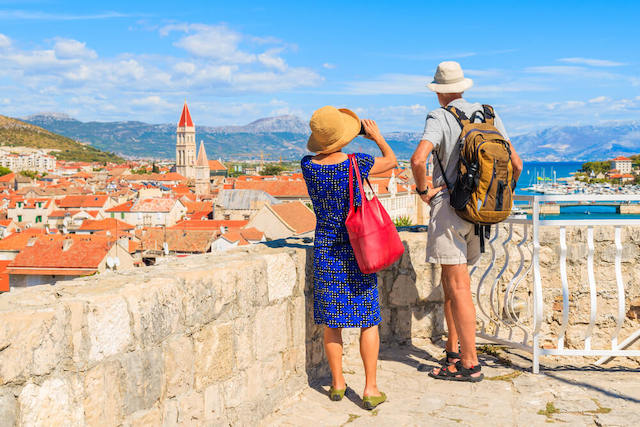
10. Ask for Seniors, Student, and Children Tickets or Discounts
One of the most obvious tips, yet often overlooked, keep an eye out for senior, student, and children tickets or discounts at attractions. These are usually listed along with the standard or adult ticket prices but can sometimes be unlisted. If discounted prices, just ask.
11. Research Ticket Costs Ahead For Online Discounts
Always search online for tickets to an attraction before visiting. Check both the attractions website and a general search on Google for discounted tickets.
Checking the attraction website can often show discounted tickets for theme parks, zoos, aquariums, museums, and more prominent attractions with higher ticket prices. These types of attractions benefit from earlier ticket sales as it helps to lock in a deal before you show up, and it helps to make for an efficient ticket sales process on site. This reduces line length and can save you time as well.
Searching for discounted tickets on Google will help reveal any offers that don’t come directly from the attraction itself. Sometimes you can find discounted tickets through resellers or other organizations with sales agreements with the attraction.
The knowledge of online discounts can, in many situations, be booked on the same day, allowing you to buy tickets with a discount standing right outside the attraction. This is great for those hesitant to book ahead.
12. Avoid Booking Ahead
This tip may seem contradictory to the previous one but is essential to consider for weather-related attractions or sights. Booking ahead can commit you to a suboptimal day.
If you are visiting a skyscraper or mountain top viewpoint on a cloudy or foggy day, you’ll be let down by not seeing iconic sights you possibly paid ahead to see. Going to a theme park on a day when it’s pouring rain can be just as miserable.
Anytime that weather or conditions can significantly impact the enjoyment of the sight, consider holding back on booking ahead, even if there is a discount by doing so. Visiting at a suboptimal time may not appear as overpaying, but it is when the conditions impact your enjoyment.
13. Find Attraction Passes in Big Cities
Many popular cities offer tourist passes or cards that either includes entry to a number of the top sights and attractions or discounted tickets to each of them.
These are most frequently found in Europe, with Paris, Rome, London, and Barcelona having them on offer amongst several cities and regions. Search the destination you are visiting to see if these types of passes are available for potentially significant discounts and the ability to skip the ticket line at attractions.
The most significant savings from these passes comes when you can visit the most attractions on them. Travelers who prefer to pack a day from early to late with sightseeing will find great value. Those with more casual itineraries should calculate the individual tickets against the price of the pass to confirm it’s worth it.
Using the Paris Pass as an example, the pass includes the Louvre, the Mussee, D’Orsay, Centre Pompidou, the Rodin Museum, Notre Dame, and over 75 attractions, including the most famous museums across the city. As a result, a two to six-day pass can provide significant savings across a trip, but only if it is used frequently enough.
14. Find a List of Free Things to do in a City
Web magazines, bloggers, and travel websites like this one love to publish lists of free things to do in a city. Search for these lists at your destination in Google and start your trip plan from there.
Visitors will often find plenty of free things as an alternative to paid attractions in any given city, with architecture, nature, and viewing points being easy options.
Below are a few examples of free thing to do lists for cities around the world:
Tokyo – Tokyo Cheapo’s 101 Free Things to do in Tokyo
Paris – Timeout’s Best Free Things to do in Paris
London – Visit London’s 101 Free Things to do in London
New York – Timeout’s Best Free Things to do in New York
15. Prioritize the List of Places You Want to Visit that Charge Admission
A perfect travel itinerary is often balanced with various sights, activities, and getting to know a city. The types of attractions or sights that typically charge admission are often the same: museums, viewpoints, historic buildings and homes, theme parks, zoos, nature parks.
Prioritize the specific. Places you would like to visit to ensure you aren’t paying too much for admission over a trip. For a casual traveler, seeing more than a few museums over a few days is too much to keep your attention.
Instead of visiting all of the top museums in a city, choose the ones that interest you the most and skip the rest. While the fear of missing out on a key attraction may drive us to keep buying tickets to everything, casual museum-goers will appreciate not paying to mindlessly wander through a fourth or fifth one on a trip.
16. Opt for Group Tours over Private Guides
Private guides will always provide a sense of security and focused attention, especially when visiting countries where a different language is spoken or an intimidating street environment that makes you feel like you may get lost.
The reality of a private tour guide is that they will often deliver the same information at sights as a group tour will, but at a much higher cost.
While a private tour guide has many benefits and having idle chit-chat between attractions can help get to know a city, the cost can be significantly more expensive than a group tour.
17. Skip the Paid Tourist Viewpoints
Seeing an iconic city skyline from a high viewpoint is one of the most exciting parts of travel. A perfect photo of a sunset lit sky or a fully lit city at night can make for the best travel photos. One consideration that is often overlooked in travel planning is the cost of tickets and time spent waiting for popular views.
Plenty of cities offer alternative viewpoints that can be visited for free, with some even offering better views.
If you are visiting Paris, skip the Eiffel Tower and opt for Montmarte. Not only is the viewpoint free, but you also get the Eiffel Tower included in your iconic photo, which you can see when you are standing on top of it.
If you are in Hong Kong, skip Sky100 or the Peak Tower and visit the Lion’s Pavillion for a free and wide-open view of the iconic city skyline.
If you are in Tokyo, pass on the Tokyo Skytree or the iconic Tokyo Tower. Opt for the Tokyo Metropolitan Government Building, which offers sweeping views of the city, with Mt. Fuji visible on a clear day.
Airfare Money-Saving Tips
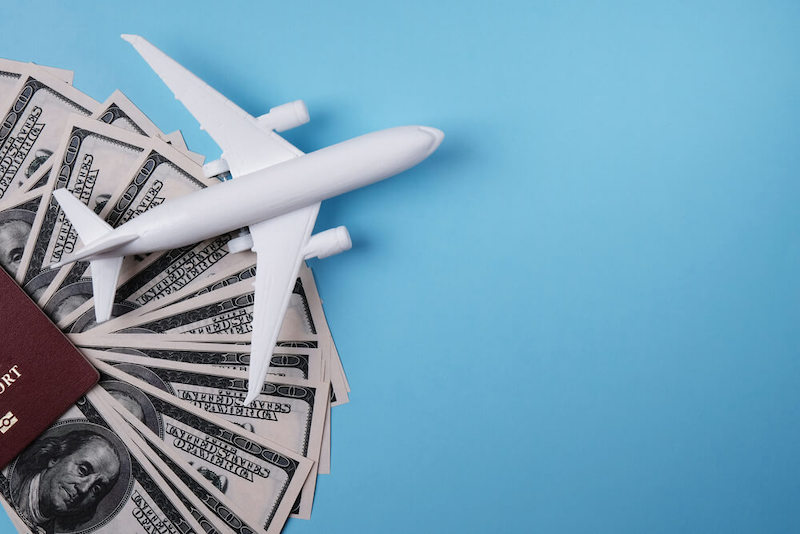
18. Search on Google Flights
There are plenty of great flight searches online, with many having different business models or capabilities. However, Google Flights consistently offers the most extensive search results and the best features for searching flexible itineraries.
Start with Google Flights to cover searches across dates, airports, and even use the explore function to search for low airfare to whole regions at a time. Want to go to Europe and not too picky about the exact city? Using the explore function, Google Flights will search for the cheapest airfare across the whole region in one single search.
The search feature also allows you to search across multiple cities simultaneously, and with easy-to-use alerts, you can wait for the best deals to come to your inbox.
19. Earn Miles from Credit Cards
Most airline mileage programs have transitioned from awarding mileage on miles flown to awarding them on dollars spent. Unfortunately, outside of business travelers and those paying for business or first class fares, this makes earning meaningful balances from flying increasingly tricky for the less frequent traveler.
One alternative to earn sizeable mileage balances for reward flights is earning through credit card spending. Many airlines offer affiliated credit cards that earn miles with the use of the card for everyday spending and offer lucrative signup bonuses that can sometimes be enough for a reward flight.
20. Book long layovers on flights to add a city
Long layovers are typically dreaded. They can extend your flight itinerary and require you to spend extended time in an airport, tired and waiting.
Use these long layovers to your advantage. Those looking to add an extra destination to their trip can consider flights with long layovers that last from a full day or overnight to an extra day. Leave your luggage checked in and head out to see a different city you weren’t expecting to visit.
You can also search directly for these layovers using the multi-city search function on airlines websites. When connecting at the airline’s hubs, there can at times be no difference in fare price for a couple of days layover. Some airlines even prompt these types of bookings as an added benefit.
Search for these by targeting major airline hubs.
To name a few options:
Emirates Airlines – Dubai
Singapore Airlines – Singapore
British Airways – London
Air France – Paris
ANA – Tokyo
Korean Airlines – Seoul
21. Don’t pay for seat selection when traveling in groups of two or more
Airlines love scaring travelers with the idea of getting a dreaded middle seat by charging seat selection fees to prey on these fears.
When traveling in groups of two or more, the airlines will typically seat guests next to each other, except in situations where there are only middle seats available.
While there is no guarantee that you will be seated together, there is a higher likelihood that you and your travel group will be put into seats next to each other, avoiding all being put into middle seats.
There is an element of playing with chance with this tactic in that there is no guarantee in the terms of the fare that you won’t get random middle seats. But conversely, by paying a seat selection fee for a middle seat, you will be paying a fee to reserve one of the least desirable seats.
Single travelers that dread the idea of getting a middle seat may still want to pay these fees for peace of mind.
22. Search Across Different Dates and Different Airports
Airfare supply and demand can create significant anomalies at times. For example, flights one day can come in much higher than the next, and two nearby airports can offer vastly different fares.
Put in flexible search conditions and even tick the box to check fares across multiple days if you can. Depending on your location, consider flying from different departure airports that are within reach of your home. Then look for other airports that you could practically arrive at, and search for all of the combinations.
Instead of searching for only flights from BWI Airport to London Heathrow, consider searching for Dulles and Reagan airports, and also include Gatwick, Stanstead, and London City airports. The expanded search covers a much higher number of flights when connections are considered, giving you the lowest possible fare from your location.
23. Fly on an Off-Peak Day or Time
While business travel has naturally been reduced from the pandemic, higher demand travel times remain depending on the location.
Some cities can see higher fares in the morning or evening than late afternoon weekday flights, while these afternoon flights can have higher fares on weekend days.
Limiting yourself to specific times and days of the week can reduce the possibility of finding the cheapest fares.
24. If You Find a Deal, Search Across Sites and With the Airline
When you have finally found flights that work for you and are at a reasonable cost, search for the same flights across several other sites to spot anomalies. Then, run an additional search on the airline’s website to see if they offer a lower fare as well.
While today’s flight searches seem as though they cover everything, you’d be surprised at how often an extra search can uncover additional savings.
25. Make Sure You Are Considering All Costs When Comparing Airfares
While low-cost airlines have been around for some time, the introduction of cheaper airfares from full-service airlines marketed as basic economy fares is a recent industry innovation. These are different from traditional economy fares. Some airlines have limited the carry-on baggage to a single personal item that can fit under the seat and no longer includes seat selection in the fare.
Low-cost airlines are well known for charging for bags, carry-on baggage, seat selection, the printing of tickets at the airport, snacks, drinks, the use of bathroom inflight, and more.
While these airlines and different airfare categories can help save money, calculate the final cost before committing to one option over a traditional economy fare. Saving a few dollars to have your legroom cut, seat padding limited, and likely a long delay with your flight may not be the best savings when considering the stress it could add.
Airport and Inflight Money Saving Tips
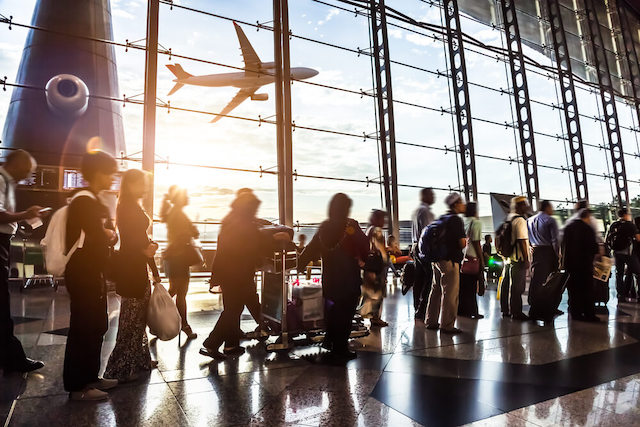
26. Bring Food to the Airport
While bringing drinks through airport security is highly restricted, bringing food is not. So skip the typical and generally bad airport food officers to save some money by bringing your own sandwich, fruit, and snacks to enjoy before your flight.
All items must be adequately wrapped and may need to go through the scanner separately, but for a family, homemade food for the airport is an easy way to save at the start of a trip.
27. Bring Snacks For The Flight
To extend the tip from above, bring your own snacks for the flight. Skipping the airport snack purchases saves money on candy and snacks and allows you to consider healthier options that might not be found at the airport.
The limitations on liquids are still in place, so be mindful that the snacks will need to go through security.
28. Don’t Buy Anything at The Airport
Limit your airport purchases to only things in the event of an emergency. Skip the books, ignore the magazines, avoid the bags of candy and snacks, use your own water bottle to skip buying one, and don’t fall in love with an intelligent travel gadget.
Anything you find at the airport will be overpriced, so you can find it outside if you do need it. Except for a last-minute purchase of a local food or snack as a gift, which will also be more expensive than outside the airport, there is no need to spend extra money shopping at the airport.
29. Get Dropped Off or Take an Uber
Check the prices on long-term parking and consider asking a friend or family member for a pickup or drop-off.
Ease the guilt of asking for an untimely favor by Handing over a handmade coupon for you to return the favor for their next trip.
If you don’t have someone close by to take you, or your flight is too early to too late to inconvenience someone, price out the cost of Uber compared to the cost of parking.
30. Download Your Entertainment For The Flight
Buying books and magazines at the airport bookstore has long been one of the standard travel experiences. A $20 book for two 8-hour flights was a worthwhile investment to stay entertained.
With inflight entertainment, tablets, kindles, laptops, mobile phones, and offline downloads from streaming services, there is no reason to pay extra at the airport for entertainment.
Download everything you need before you head to the airport, and you’ll have no worries once you switch to airplane mode.
Transportation and Getting Around
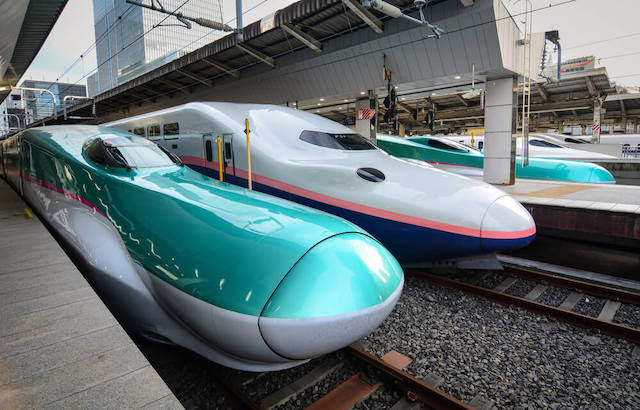
31. Walk Everywhere You Can
Walking is not only a great tip for saving money while traveling; it allows you to get to see a city in a way that you never could in a subway, bus, or even speeding by buildings in the back of your car.
Getting your steps in is also a fantastic way to burn the extra vacation calories, giving you an excuse for the extra crepe, waffle, gelato, or mango sticky rice.
32. Know Your Traffic Rules and Speed Limits
Driving in another country is far less intimidating than most people expect. However, the relief of getting on the road can quickly turn to overconfidence, with drivers losing track of traffic laws, speed limits, and parking rules.
Be aware of the laws and your own speed to avoid receiving a ticket in person or even a camera-triggered ticket in the mail weeks after returning home from your trip.
33. Look for Multi-Day Transport Passes
Whether you are looking for a European rail pass, Japanese rail pass, regional pass in a particular country, or city pass covering a city, transport passes across multiple days can offer a lot of Vaud to travelers.
Typically these passes are offered exclusively to foreign visitors, which is below what typical commuters would pay for a similar amount of use.
Consider the transportation included, the number of days of validity, and your expected use before purchasing. For example, a $10 a day all-you-can ride subway pass sounds like a no-brainer until you estimate that you really only need one or two round trips at $1.50 a ticket, for a total cost of $3 or $6 maximum.
The same goes for long-distance trips. For example, the weeklong JR Rail pass in Japan is often purchased by travelers who only use it for a round trip train journey from Tokyo to Kyoto, which is cheaper if purchased separately.
Calculate your needs first, and if it makes sense with your itinerary, make the purchase.
34. Compare Rental Car vs. Rail Pass
Europe is famous for its rail passes, making them an iconic part of traveling across the continent. As a result, international travelers will often assume that rail is the most logical option for easy travel and even cost, with great multi-day passes.
The above assumption is typically correct for single travelers moving between cities, though a key exception is when traveling as a group. One rental car can offset four rail passes, providing substantial savings depending on the itinerary.
Don’t forget to factor in tolls, gas, and parking when comparing the options. While a rental car can provide a level of convenience as a sort of a mobile home base, the comfort can be lost when city-hopping across Europe.
35. Use Public Transportation
Public transportation can be intimidating for inexperienced travelers and with language barriers. Some countries cater well to foreigners with English signage and announcements, while others make navigating bus routes nearly impossible for non-locals.
Anytime you use public transportation like local trains, subways, or buses, you’ll find significant savings over taxis, Uber, or car services.
Subway or rail lines should be the first option when available, with the ease of use limiting the intimidation factor. Bus lines are also a viable option if you feel comfortable with the information available to navigate the network.
Multiplied over a whole trip, using public transportation is an easy option for daily savings. Reserve the taxi or Uber trips for late-night trips back to your accommodation to stay safe.
36. Use Google Maps and Citymapper Apps to Get Around
Beyond money-saving tips, both of these apps are travel essentials for anyone looking to get around major cities. Both offer easy-to-understand directions, with integrated public transportation routes.
Those looking to navigate public transportation systems will find these apps do all the hard work, breaking down the route, location of stations or stops, and walking directions to get there. Then, all you need to do is research how to use the city’s transportation.
37. See If the City Offers Public Bicycles
In the current times, with environmental awareness and quality of life in city’s getting a lot of focus, public bicycle sharing has become more prevalent globally. Globally there are different programs, ranging from government-sponsored bike rentals to companies offering public bike use.
Research to see if your destination offers public bicycles and see how to sign up for use. Not only does using a bike in place of more expensive transportation save money, but it’s also a great way to see a city.
Check out Citi Bikes as an example of how New York City’s program works.
Saving Money on Cruises

38. Book Last Minute Cruises
Unlike hotel rooms and airfares that can spike in price for last-minute bookings, especially when limited rooms or seats are available, cruise bookings will generally drop in price.
The primary reason for this is the business model of a cruise ship, where significant revenues come from onboard sales, activities, meals, drinks, and gambling. Fewer guests aboard will limit the ability for ships to make these additional revenues, incentivizing cruise lines to drop prices at the last minute to fill the vessel up.
Those with flexible plans or willing to wait until later can find significant savings booking as late as possible. However, this also runs the risk of missing a dream destination for specific dates, so you should only wait if you are flexible.
39. Consider the Cheaper Room Options
A window with a view or a balcony to get fresh air is essential for some cruise fans or first-time cruisers looking for the best experience, though they cost more than the inside rooms.
Consider an inside room for some easy savings on a cruise, with the room category being the cheapest available across ships. While the lack of an outside view does t sound optimal, those planning on making the most of the ship’s facilities will find that their room is primarily used for sleeping and showering, and a window at night doesn’t offer much scenery when at sea.
Families in need of more than one room can request an inside room across the hall from a room with a balcony. This helps balance the budget and have the best of both worlds in savings and outside space.
40. Know The Cruise Line’s Policy on Bringing Alcohol Onboard
Cruise lines vary in their policies for bringing alcohol on board. Some are pretty restrictive, limiting guests to only bringing a bottle of wine or two per person, while others are more relaxed.
Confirm the policy before traveling to maximize your allowance. For example, buying on board can be more costly, and having a bottle of wine to enjoy from a sea view balcony offers an affordable way to enjoy a sunset aboard.
41. Pay-up for a Beverage or Dining Package
Beyond the base dining package on cruises, various premium packages are available depending on the line. These include meals at the higher-end onboard restaurants to all-you-can-drink options across the ship’s bars and lounges.
Those who plan on enjoying more drinks and better meals can find decent savings with these packages compared to ordering individually throughout the trip. Research the costs of ordering off-menu to see if these packages are the right choice for your trip.
42. Bring Aboard Everything You Will Need
Cruise ships at sea are the perfect captive consumer base that cruise lines love when pricing items for their shops. As a result, they can almost charge guests whatever they want for essentials, steep premiums over what can be found in stores on land.
Carefully write your packing list to include everything from essential medication, toiletries, suntan lotion, batteries, chargers, sunglasses, and swimwear. Limit the possibility of having to buy anything on board to avoid overpaying.
43. Use Your Credit Card or Visit ATMs When in Port
Stay away from exchanging any currency onboard and use your credit card where possible when visiting each destination. If in need of hard currency, use an ATM to get the lowest exchange rate when in port.
If you are on a cruise with destinations that use different currencies, avoid getting cash or using it where possible. Even small amounts of leftover currency at each port will result in lost value when exchanged onboard or leftover at the end of a trip.
44. Try Out the Free Activities Onboard First
Cruise ships can at times feel like floating theme parks with the number of attractions, rides, games, and activities on board. However, the challenge to your wallet can be that many of these attractions have prices associated with them.
Each ship will offer several free activities, and the information desks can help point these out upon inquiry. Start with the free activities before moving on to the paid ones; this will avoid any unconscious spending when the excitement from being onboard is still high.
45. Visit the Gift Shop’s on the Last Day
On the last day, ships will often discount items in their stores and gift shops to move inventory and reduce onboard stocks of items.
If you are looking to pick something up as a gift or souvenir to remember the trip, wait until the last day of the journey to get the best possible price.
46. Reconsider Paying For WiFi
Unfortunately, some cruise lines still charge daily or trip-long fees for a WiFi connection. Research your ship’s policy before your trip and consider whether you need it.
Some ships offer several free WiFi locations to help you connect with family or check messages periodically. Consider if you really need to pay the sometimes outrageous fees for a continuous connection or if you can enjoy some time being off the grid.
How to Save Money on Rental Cars
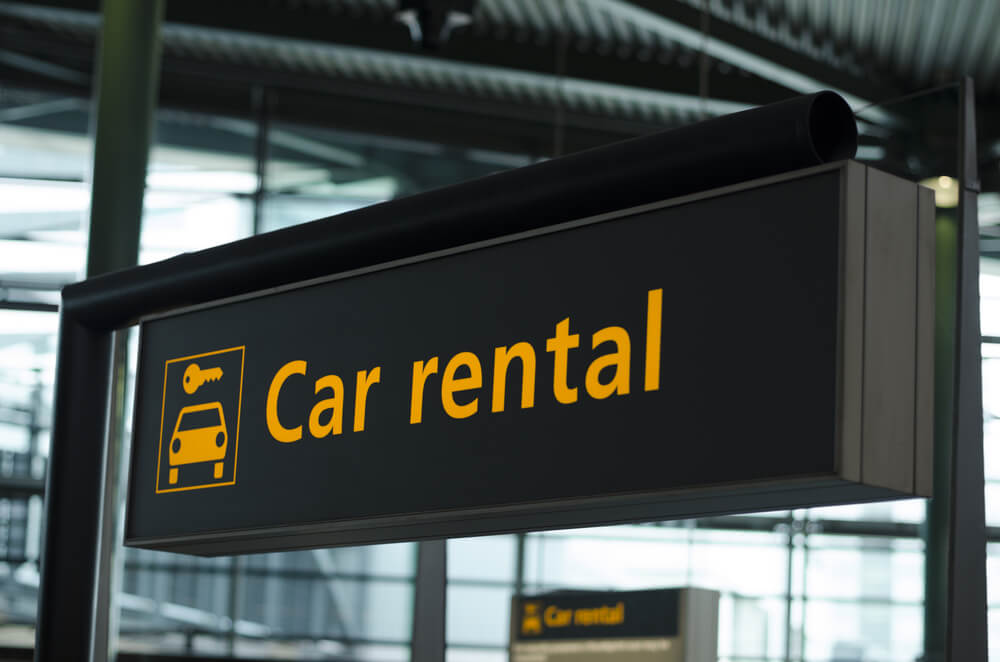
47. Book Early, Cancel Later On
Many directly booked rental car reservations do not require any down payment and have no cancellation penalty. If you see a reasonable rate and there is no need to worry about your plans or dates changing, get the booking in, and you can cancel later if there is a change.
Be sure to read the rate terms to confirm that you are booking a no-penalty rate.
48. Search For Package Deals
The package deal includes a flight and car rental, and possibly a hotel is often the best way to reduce car rental costs for a trip. Online travel agents like expedia.com or priceline.com often provide the best deals for those booking in one package.
Perform a couple of searches to compare rates. While the savings for shorter trips may not be massive, you can find significant savings for multiweek trips.
49. Search For Discounts Before You Book
Rental car companies are notorious for having multiple sales, discounts, corporate discounts, and coupon codes running at all times.
Do a little research online or check for discounts from organizations you are a member of or your company. Larger travel desks often have discount codes available to staff for pleasure booking, and plenty of other organizations and credit cards also have discounts.
These discounts are more widely available for future reservations compared with last-minute bookings when rental car companies have more knowledge of their supply of cars available.
50. Bring Your Own Child Seat
Rental car companies can often charge $10 or more for a child seat per day. This can really add up across multiple days or with more than one child.
While packing a child seat for a trip may sound like a hassle, your luggage allowance should have room if the child has their own ticket, meaning in most cases, there won’t be an additional cost to bring it.
Don’t be deterred by the thought of lugging the seat around airports as it only needs to be carried from the baggage return to the rental car pickup. Then it can remain in the car for the rest of your trip.
51. Skip the Added Insurance
Rental car companies are notorious for offering additional insurance that most renters do not need. Offering an additional insurance policy that will cost an additional $30-60 USD per day is an easy way for the fear of driving an unfamiliar car to get the best of us.
Before your trip, check your car insurance policy to confirm your coverage as well as its applicability to rental cars. For drivers and car-owners with existing insurance, many policies will cover everything the $60 policy will cover, with the same deductible you would have to pay if you damaged your own car.
52. Use a Credit Card That Covers the Primary Insurance Deductible
Car rental companies also offer insurance coverage at a per-day cost to cover the deductible you would pay with your policy.
Beyond your insurance, premium credit cards include additional rental car insurance coverage as part of their benefits. This coverage will not replace your insurance policy but can often supplement it to cover the deductible.
Yet again, if you have these benefits and are clear on the coverage, there is no reason to buy additional coverage with your rental car that would overlap with the coverage from your credit card.
53. Pay Tolls in Cash or Bring Your Own Toll Pass
Another money grab by rental car companies is to offer the convenience of an automated toll pass located in the car already.
The pass is set up so if you need to drive through a toll, you can pull down a box to expose the toll pass and go through the automated lane without having to pay at the toll.
The downside of this convenience is that you will still need to cover the tolls, but with some rental car companies, you’ll be charged an additional $5.95 daily fee from the first day you use the pass. After that, the rental company will charge this fee every day until you return the car, even if you only use it once on your first day.
To avoid this charge, pay your tolls in cash or bring your own toll pass on your trip if you have one for added convenience.
54. Turn Down The Extras
Beyond the examples mentioned above, rental car companies offer plenty of extra services that are not essential as part of a trip.
Prepaying for a full tank of gas when you return the vehicle sounds fair when you see the price. However, in reality, this doesn’t make sense when you realize the likelihood of you managing your gas usage to have a perfectly empty tank is relatively low, meaning you will most likely be paying for gas that you never use.
Paying by the day for satellite radio or GPS in the car is also unnecessary considering that your mobile phone and Bluetooth connectivity will cover both for free.
55. Take a Walk Around the Car Before Driving Off
While it’s not a common occurrence, it’s still possible for a scratch or dent that was previously on a rental car to not be identified by the rental car company when the vehicle was returned, resulting in it being attributed to your rental period.
To avoid the possibility of taking the blame, charge, and hassle for someone else’s mistake, take a quick walk around your car before you get in and drive off. Then, if you spot something, raise it to the staff.
56. Set a Reminder To Fill-Up on Gas Before Returning
Returning a rental car with a full tank sounds easier said than done when trying to remember your flight time and navigating to the airport on unfamiliar roads. It’s easy to forget the stop you need to make for gas.
Add an alert to your phone, which can be set up even when you make the rental car booking, to make sure you remember to stop around the time you would be driving back to the airport.
If you remember as you start your drive, don’t enter the airport address into your navigation app, but enter a gas station. Look for one that is close, but not too close, as airport gas stations will charge higher rates than their competitors even a few miles further from the airport.
Shopping Tips to Save Money While Traveling

57. Buy Less
Souvenirs and gifts brought back from vacations used to be an essential part of the experience. They were the best things to keep around to trigger a happy memory and share exotic finds with friends and family.
In previous decades, the number of rolls of film, film processing, and photo printing could add to a traveler’s costs. Fast forward to the digital age, and you can photograph or take a video of almost everything on your trip.
Enjoy capturing your memories in photos and video, and enjoy not needing to buy as many things to remember a destination. Of course, this doesn’t mean you don’t shop while traveling, just that being more thoughtful in your purchases can save you money.
58. Avoid The Touristy Souvenirs
The Big Ben snow globe probably doesn’t drive the same excitement in the 2020s as it did in the late 1980s, so no need to pick one up.
Pass on the overly touristy souvenirs, which are often overpriced and not even made in the country you are visiting. For example, the cheap chopstick set at the Tokyo gift shop may cost a lot less than a handmade set from a specialty store. However, there is a much higher possibility of the budget-friendly set having its paint chip away after a few years, while the handmade set could last a lifetime.
59. Don’t Be Afraid to Bargain or Negotiate
Bargaining or negotiating prices in the US and other Western countries is not typical due to the corporate nature of the economies. The produce manager in your big box grocery store is not likely to be able to accept your lower price for oranges because you are pretty convincing.
Many other countries worldwide have long histories of market cultures allowing for or even expecting bargaining for the price as part of the experience.
Don’t be shy about asking a shopkeeper or market stall owner for a lower price or a special deal when buying more than one item. Each country has its own norms on bargaining, so be sure to research a little and don’t be intimidated asking for a better price.
60. Look Out for Local Heritage Brands as Souvenirs
Many countries or regions often have decades-old local brands that have stood the test of time and built up a loyal following. These brands could sell anything from soap to knives to tools but are often closely associated with their home country and may not even be known overseas.
Once you have done a little research to find the legendary local brands, take a stop by a local store that is not remotely touristy to find those items as a gift.
Examples of this could be picking up a tool at a German hardware store, paper at a Tokyo stationery shop, or a traditional corkscrew in Spain. These common everyday items will make fantastic alternatives to cheap souvenirs and save you money if you find something you need.
61. Buy Something You Will Consume
Rather than forcing yourself to buy another coffee mug, t-shirt, or keychain that you don’t need, buy everyday items that you can enjoy.
Look for local soap, shampoo, cosmetics, or everyday personal care items. Also, consider buying food items in the grocery store that you’d love to try, sample sauces, pickles, spices, noodles, oils, or snacks.
By purchasing consumable items from local stores as souvenirs or gifts, you will save the money otherwise spent on things that might end up in a box or closet within a couple of weeks of returning home.
Tips to Save Money on Hotels and Vacation Rentals

62. Consider Airbnb and Other Home or Apartment Rentals
Airbnb’s disruption to the hotel industry has opened up plenty of unique and high-value accommodation options for travelers.
Deserving of being the first tip in this category, searching for Airbnb and other vacation rentals is an easy way to better meet your needs outside of hotel offerings.
Whether you plan a more extended stay, opt for renting a room over staying in a hostel, or need enough beds that multiple hotel rooms would be too expensive, looking into vacation rentals is an excellent place to start for savings.
63. Beware of Resort Fees
One annoying charge at many resorts in the resort fee, which can be most commonly found in the US. Resort fees are additional charges that can sometimes be called destination fees, facility charges, or amenity fees.
They are an additional per-day charge that resorts will charge for gym access, WiFi, pool access, beach services, etc. Ranging from as low as $20 a day, they can reach $100 a day.
Given that these fees are not typically quoted as part of the room keeping an eye out for them is critical for comparing across properties.
There are some ways to avoid them, either through having certain levels of loyalty status with the big brands or even in some cases complaining to hotel managers when caught by surprise.
64. Book a Hotel For a Purpose
Know the reason you need to book a hotel in the first place before choosing which one. Quite often, consumers will align themselves with a certain standard, and in the case of hotels, book certain brands or rated properties by default.
This post breaks down the methods you can use to make more strategic hotel bookings and avoid booking a hotel with facilities you won’t need during your stay.
65. Compare Prices With Booking Directly
With plenty of online travel websites like Expedia, Agoda, Booking.com, and Priceline offering great deals, and more consolidated searches across brands, it’s easy to find what you need on these websites.
If you are looking to maximize your savings, check out the hotel’s website before you book, as it may offer a better deal, or the brand may have a policy of always offering the cheapest rate. Using Marriott Hotels as an example, the hotel chain has a low-rate guarantee and will provide up to 25% off the competitor’s published rate if cheaper than their own, depending on the brand.
Additionally, loyalty members may only receive benefits for reservations made directly with the hotels, possibly cutting out additional savings if booked through an online travel agent.
66. Pack The Air Mattress
When traveling with a group of friends or family with older children, the discomfort of full-grown people sharing a bed can drive the need to book a second room. Such as booking a room for four, including parents and two grown children.
If you book a room large enough in square footage, consider packing an air mattress and ordering an extra pillow or blanket. This will save on the costs of the old-fashioned rollaway bed that hotels used to offer for free. This tip is most practical for car trips, as flying with an air mattress will use up a large chunk of your luggage allowance.
67. Skip the Minibar
The convenience of the minibar gets the best of all of us at some point in time. It’s just too easy to reach for a cool refreshing drink when room temperature bottled water or tap water just won’t work.
Plan ahead and bring your own drinks and snacks to the hotel, or head out to a convenience store nearby. Cities in Asia will often have a convenience store no more than a block or two from the hotel, often right outside. So there is no reason to spend $5 on a drink that would cost you $1 outside.
68. Book a Room With Club or Lounge Access
Assess the rates for rooms that offer club or lounge access and calculate the value for your stay. Hotel clubs and lounges typically include breakfast, all-day drinks and snacks, and an evening happy hour with a small buffet.
A family of four looking to unwind at the hotel in the evening may find that the difference in rates for the club and lounge rooms divided by four offers excellent value for the meals it provides. This is also a good value for groups who prefer to relax with a few drinks and snacks at the end of the day.
Those looking to explore the local food scene, especially in cities with a great local breakfast culture with cheap baked goods right outside the hotel, will find the value isn’t there.
69. Consider the Breakfast Rate
Calculate the cost of breakfast and alternatives when comparing the different room rates. For example, when a breakfast rate is only an additional $15 for a room with four guests, that will offer a great value compared to buying breakfast outside the hotel.
If you are in Paris, with a breakfast rate costing an additional 30 Euros per night, it might seem like a lot. But, considering, if you would be happier spending only a couple Euros for breakfast at a local bakery, the breakfast rate doesn’t make sense.
70. Join the Hotel Loyalty Program
If you are staying at any major hotel chain that offers a loyalty program, it always makes sense to join before your stay. Even if you don’t foresee yourself building up to point balances from multiple stays that could ever earn you a free night, these loyalty programs often offer some free perks just for general members that sign up for free.
Perks like free WiFi or even the ability to justify a slightly later checkout can make the few minutes to sign up worthwhile.
Money-Saving Travel Tips for Eating and Drinking

71. Eat Like a Local
The more you localize your dining and drinking choices while traveling the more you will save. From skipping hotel restaurants and avoiding foreign foods and drinks to eating humble street foods and dining at restaurants frequented by locals instead of tourists, the more that you can dine like a local, the more you’ll save.
Try local foods, local brands, local drinks, and avoid ones that would be more familiar to you in your home country. Local beer and wine will typically offer a reasonable discount over imported brands, local fast food and chain restaurants will always be cheaper than foreign brands and chains. Eat and drink local and it’ll go a long way to saving you money while traveling.
72. Make Lunch Your Main Meal
Lunch is cheaper in nearly all destinations, with plenty of top dining spots and even Michelin-starred restaurants offering a lunch option that can be even half the price of their dinner menu, with the same quality of food served at lunch.
Restaurants catering to locals will also try to drive business by offering special set menus or business lunch specials that provide an excellent value for visitors looking to save.
Having a larger meal at lunch also works well with itinerary planning. It is typically in the middle of a day that you may be walking a lot, providing an energy boost when you need it, and while you are out in areas that have interesting restaurant offerings.
73. Keep Your Meals Simple, Skip the Extras
For some, dining out on vacation in a food-focused country is the highlight of the trip; for others, it is part of a complementary experience. Those in the second camp should order the must-have dishes and skip the rest.
Stick to main courses and a drink to go along with them. Order the popular dishes, but skip appetizers and desserts. While these are undoubtedly great additions to a meal, cheaper alternatives will also add to your experience, like street snacks or desserts.
74. Have Drinks in a Park or With a View
Many countries don’t have open container laws limiting people from having alcoholic drinks in public. If your destination has fewer restrictions on this, consider buying a bottle of wine or a few beers and enjoying some drinks outside with a view or in a scenic park.
Not only will the savings over a bar or restaurant help with your travel budget, but the experience will also make for a unique memory on your trip.
75. Shop at Local Grocery Stores
Local grocery stores offer the best source of affordable food while traveling anywhere. In addition, stores can offer a selection of snacks, fresh fruits, prepared meals to go, drinks, and ingredients to make meals at a home or apartment rental.
Even shopping at a local grocery store can offer a great experience of exploring how locals shop and eat in modern times while allowing you to save some money at the same time.
76. Find Local Markets and Buy Fruit for Your Hotel
Picking up some local seasonal fruit while walking through a market is not only a smart way to save money on snacks or food at more expensive restaurants; it also adds to the trip experience by exploring local specialties.
77. Ask for Tap Water
If you are traveling to a destination with reliable and clean local water available, don’t be afraid to ask for tap water at a restaurant. Many restaurants offer it for free when requested.
Menus, especially at more touristy restaurants, may lead you to believe that large bottles of premium still or sparkling water are the only options available. Before ordering, ask for tap water to save some precious funds for better use.
78. Avoid Touristy Restaurants
Touristy restaurants are guaranteed to cost more than similar ones frequented by locals. While they may sometimes be an attraction themselves or offer an iconic view, avoid them at all costs for other situations.
There are plenty of rules that travelers use to avoid touristy restaurants, like don’t go to a restaurant in a foreign country with a menu that is not in the local language, or don’t go to a restaurant within a five-minute walk of a major attraction. Whichever rule you are using, be on the lookout for any restaurant primarily serving tourists.
79. Skip the Hotel Breakfast
If breakfast at your hotel is already included in the lowest rate, you can find substantial savings, especially for a family. If it is not included, reconsider paying up for the inclusion, and avoid paying for it separately.
Hotel breakfasts offer plenty of convenience for business travelers but are known not to provide an excellent value for others. Additionally, hotel breakfasts, especially at the large chains, are generic in their offerings and rarely offer as memorable an experience as a delicious local breakfast.
80. Don’t Skip Convenience Store Snacks
Local convenience stores offer the perfect opportunity to sample everyday foods that locals eat today. Countries with strong convenience store cultures, like many in Asia, offer a wide selection of local snacks, quick meals, drinks, and more.
With affordable prices and an opportunity to sample what locals eat in modern times, sampling food and snacks from convenience stores make for a great way to curb your hunger, avoiding the need for larger meals at more expensive restaurants.
81. Have a Hotel Picnic
Avoid the pressure to feel that you need to eat every dinner out while on vacation to avoid missing out on an experience. Instead, a hotel picnic is a more affordable alternative that helps you relax and enjoy delicious local foods.
Plan to bring local specialties, fresh foods, and gourmet market foods back to the hotel for an in-room picnic while relaxing after a busy day out. You can bring together a variety of must-try foods from your destination to enjoy while recounting the events from the day or planning the next.
Visit our guide to hotel picnics to learn how to plan the best one.
Travel Money-Saving Tips for Foreign Exchange and Credit Cards
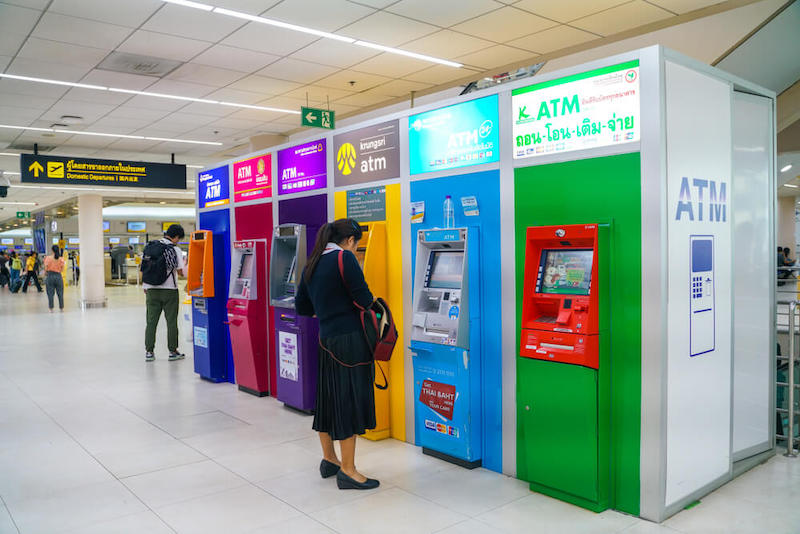
82. Avoid Foreign Transaction Fees
Foreign transaction fees are simply transaction fees added to any foreign transaction made on specific credit cards for the currency conversion on the transaction. This is typically a flat rate of around 3% of the total charge, which can quickly add up when using a credit card for hotels, rental cars, rail tickets, and meals while traveling.
Avoiding the fees is simple. Many credit cards are available which don’t charge foreign transaction fees, and some don’t have an annual fee. Bring a credit card that doesn’t have an annual fee, and use it wherever credit cards are accepted for payment.
83. Skip the Exchange Desk, Get Your Money From ATMs
ATMs will almost always provide the best exchange rates for purchasing foreign currency.
If you are using your Visa or Mastercard at an ATM, those companies will calculate the interest rate, which is a very fair rate due to the high volume of foreign exchange transactions processed by the companies.
Ordering foreign currency at your local bank or exchange desks in airports, hotels, or railway stations will naturally need to use worse exchange rates or add fees to compensate for the labor involved in the transactions compared with the automation from an ATM.
84. Get a Debit Card With Free ATM and No Foreign Transactions
While using an ATM with the fees involved will typically still be a better deal than exchange desks, having a debit card that doesn’t charge a foreign transaction fee and waives ATM fees will help to reduce unnecessary costs further.
Cards with these favorable fee policies are rarer, though still readily available. Charles Schwab was one of the first banks to offer these in the US, though Capital One also provides a popular option for a similar no-fee account.
85. Look Out For Dynamic Currency Conversion
By far the most egregious mistake a traveler can make while abroad, Dynamic Currency Conversion is typically seen at credit card point of sale terminals and ATMs. The machine will offer the option to pay or be charged in your countries home currency. This will be presented as a more convenient alternative for the customer.
This effectively means that the company that provides the point of sale terminal or the ATM will perform the currency conversion rather than your card issuer. With the extremely favorable conversion rates offered by Visa, Mastercard, and American Express, by choosing to be charged in USD instead of Euros, you will likely be paying a much higher charge on the transaction than if you accepted in the local currency.
There are awful examples of a $1000 hotel bill costing an extra $70 due to you accidentally accepting the charge in your card’s currency instead of the local currency. Therefore, unless your card network or issuer specifically has unfavorable terms for foreign transactions, always accept payment in the local currency.
86. Know Your Exchange Rates
Avoid overpaying for items in the local currency by having a benchmark in mind or a rough rate to quickly calculate on your phone.
When shopping, if you see an item that costs 250 in the local currency, which you can roughly convert at 100, equal to $12, you can easily know that the item will cost you $30.Having a benchmark will help avoid purchasing items that you would never buy for the price offered or skipping restaurants out of your budget.
87. Never Pay in A Foreign Currency For Convenience
Shops will often proudly show signs to let customers know they will accept USD, EUR, GBP, JPY, or other currencies. But, unfortunately, this seemingly convenient gesture will only overcharge you compared to other payment options due to largely unfavorable exchange rates.
Use a credit card with no foreign exchange fee at these shops, and you will avoid the excessive rate.
88. Earn Points or Miles With Your Credit Card
Having a credit card that earns points or miles with everyday purchases is a great way to save for lucrative travel rewards every day.
Using these same cards while traveling can often lead to higher point or mile earning opportunities. Airlines, hotels, and premium card issuers generally offer higher earning options per dollar spent on airfare, hotels, and other travel arrangements using the cards.
89. Know the Tipping Culture
Each country has its own culture around tipping, with some having a percentage of the bill left as a tip for certain services, others rounding to a certain amount, and plenty having no tipping culture whatsoever.
Research tipping rules before you travel to know the cultural practice, and don’t tip beyond that. Knowing the norm will not only save you money, but it will also avoid you disrespecting someone in countries where tips are viewed as an insult, like Japan.
90. Get a Card with Travel Perks
Beyond earning points and miles, many credit cards offer a variety of valuable travel benefits that can enhance your experience.
Airline cards offer baggage allowances, lounge access, priority check-in or boarding, and other discounts. Hotel cards provide room upgrades, late checkout, and sometimes free elite status.
American Express, Citibank, or Chase premium cards offer a mix of benefits for air travel and hotel stays, along with valuable trip insurance, lost baggage compensation, and other perks that can enhance a trip or offer value in the event of a disruption.
Annual fees vary depending on the card, so choose the right card for your travel frequency and habits to ensure you aren’t overpaying for the benefits you need.
Internet, Phone, and Connectivity Travel Money-Saving Tips
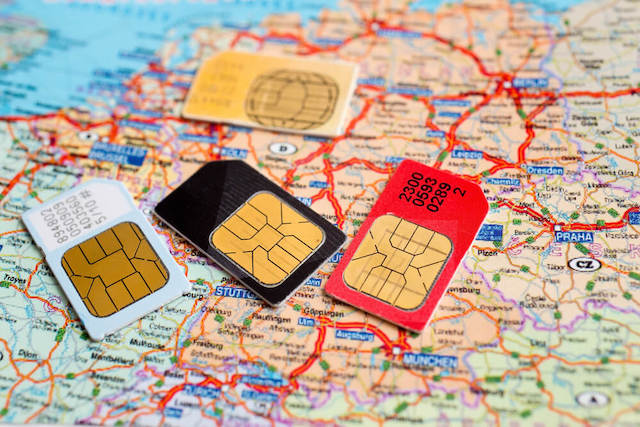
91. Use a Local Sim Card
International roaming and international plans offer very little in value, considering the costs they add to an overseas trip.
While the security of knowing you will be connected right after you land may sound essential, most airports these days have WiFi you can access by the time you reach the baggage claim.
Do a little research before you depart for your trip, and you’ll find the options available to get a local SIM card for your destination, offering sizable savings, sometimes with a much larger data allowance. In addition, you can order some overseas SIM cards before you fly, though these will also have a convenience fee built-in.
92. Opt for a Mobile WiFi Device if Available
Even better than getting a local SIM card, renting mobile WiFi devices often offer better value. They can be used for your phone, tablet, and even laptop and can be shared across multiple users.
Often referred to as WiFi eggs, Mobile WiFi devices are like a small portable router that receives a data signal through a SIM card and send it out to users through a typical WiFi connection.
Research your destination online to see if these are available, with their recent popularity for use by travelers, making them commonly available for pickup and drop off at international airports.
93. Get The Right Data Package
Whether you opt for a local SIM card or a mobile WiFi device, knowing how much data you will use is key to avoiding running out or being overcharged.
Many budget-conscious travelers have made the mistake of thinking that 2 GB of data could get them through a week, only to find that their social media, YouTube, and Netflix use burned through the data on the first day.
Error on the side of cautions by getting a bit more than you think you need.
94. Switch to Free WiFi When Possible
Even if you have set yourself up with an affordable local connection, it’s still worth tracking your usage and switching to free WiFi when you can.
A common mistake with travelers who got themselves a local SIM card is forgetting to switch to free hotel WiFi when winding down in the evening and catching up on a Netflix show on their mobile phone.
Most phones will auto-connect to WiFi when you return to the hotel, so set it up once, and you won’t need to worry for the rest of your stay.
95. Don’t Pay for Long Distance Calls
The days of $5 a minute international calls from hotel rooms being rushed to tell your loved ones that you are still alive and enjoying your trip are finally behind us.
With a wide selection of options to make phone or video calls over the internet, there is never a reason to need to make a long call home with your hotel phone. So don’t even consider it.
There are plenty of options available from WhatsApp, Google, Skype, Zoom, Facebook, and more. If you have less tech-savvy family members, take some time to set up their account before you travel and give it a test run as well.
Packing and Travel Gear Money-Saving Tips
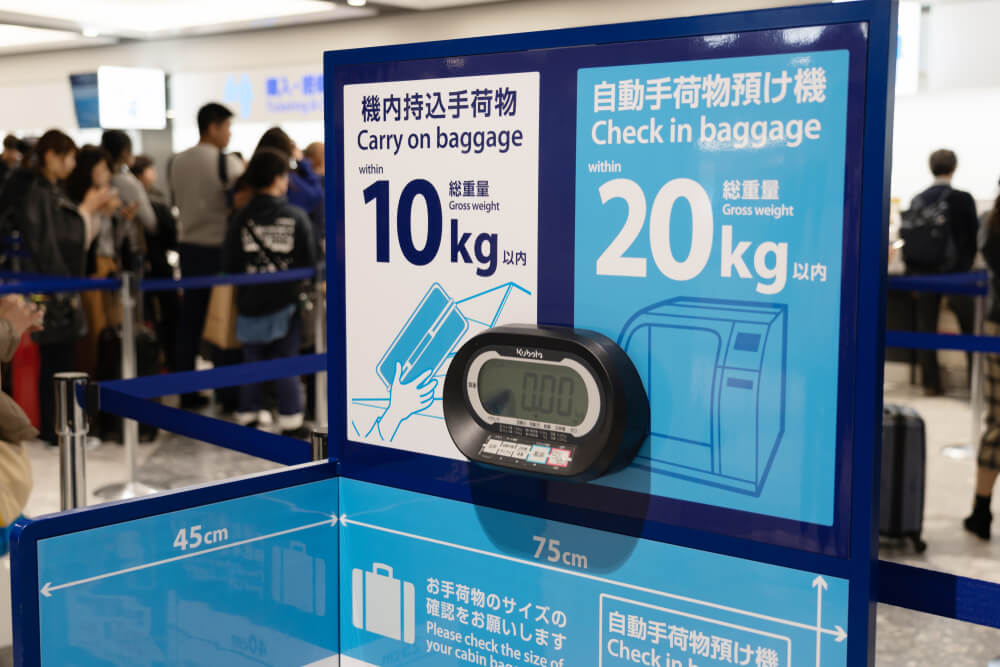
96. Borrow Travel Bags and Gear Instead of Buying
There is no need to go online and order every travel accessory available to start your packing process for your big international trip. Instead, ask a friend or family first if you don’t have a travel adapter, luggage, roller bag, digital camera, action camera, large backpack, or other accessories.
First-time travelers can find that all of the accessories that help for an exciting vacation can add to their expenses when buying in one go. Luggage, cameras, adapters, and other small accessories can easily cost hundreds of dollars, with suitable options to borrow.
Borrowing is also a great way to find your preferred features on different travel gear before purchasing something that could last for years.
97. Pack Light to Avoid Extra Baggage Fees
Packing is a practice in prioritization. Spend the time to make decisions with your packing between what you truly need and what you can leave out.
Limit the number of shoes you need to bring. Pack clothes with the plan to re-wear things that don’t get seriously dirty. That nice shirt or dress that you might only wear for a two-hour dinner can be worn again a few nights later.
Even if you are well within the weight and baggage limits that come with your airfare, packing light can also create some extra space for anything you might buy along the way.
98. Weigh Your Luggage Before You Leave
Avoid the surprise of excess weight charges at the airport due to not taking a few minutes to weigh your luggage before leaving.
Paying extra for luggage when you could have easily prevented the charge by making a few more packing decisions makes for a frustrating start to a trip.
Weighing your luggage for your return flight can be harder, with most hotels not offering scales. Ask housekeeping if a scale is available.
99. Take a Water Bottle
Make a green decision to bring your own water bottle for your trip. Pack it empty in your carry-on bag, and you can save money avoiding buying the ubiquitous airport water bottle, then use it along the way for the rest of your trip.
Clean public water fountains and sources have become more prevalent globally, do a little research before you leave to know where to find them when you arrive at your destination.
100. Limit the Devices You Pack
Many see a twenty-hour flight itinerary, followed by two weeks traveling across Southeast Asia as the perfect opportunity to bring their phone, iPad, laptop, drone, GoPro, DSLR, extra batteries, charging cables, and accessories. Unfortunately, though the advertisements may have sold you on the need for these devices to capture memories and stay connected, they never mentioned weight.
While most travelers will pack fragile electronics in their carry-on baggage, this weight and space will use up valuable space that could be used to manage your checked baggage weight. Some airlines, especially low-cost airlines, will charge you for overweight carry-on bags.
Prioritize what you need to bring for your trip and share the pain of carrying it all amongst your group. For example, will you really need your tablet and your laptop? Will you have to bring a digital camera or can your phone take what you need? Are you visiting a big city where drones may be difficult to use?
You don’t need to over-minimize your packing and bring only your phone, though you can, but rather it’s suggested to be mindful of the potential costs that come with carrying too much, even if it is in your carry-on.

